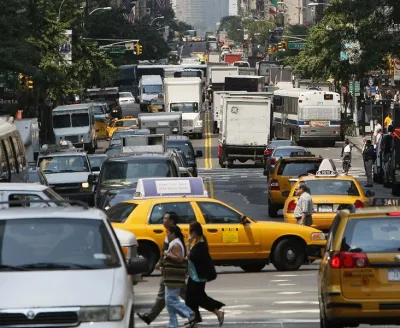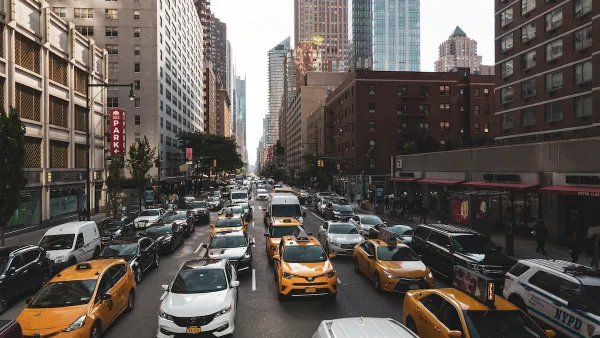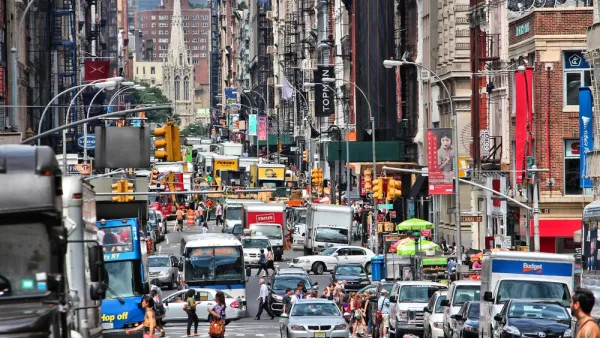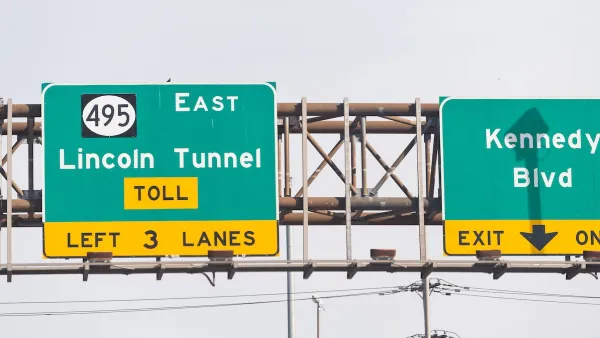After more than a decade of delays and reversals, congestion pricing is expected to take effect in Manhattan in late 2023 or early 2024.

The New York MTA earlier this week released the Environmental Assessment for the long-awaited congestion pricing scheme proposed for a section of Manhattan, reports Stephen Nessen for Gothamist.
The Central Business District Tolling Program Environmental Assessment (EA), which is available for public review, includes new details about how congestion pricing—more accurately described as cordon pricing—will work in Manhattan. “The congestion pricing assessment considered a range of tolling schemes for vehicles, including one that charged as little as $9 during peak hours,” explains Nessen. The high end of the range for private automobile owners could go to $23. “The tolls for commercial vehicles and trucks range from $12 to $82,” reports Nessen.
As for the other end of the equation, the congestion program is expected to raise $1 billion for improvements to public transit.
About 80% of the money raised would go toward subways and buses, with 10% to the Long Island Rail Road and 10% to Metro-North. The current capital plan stands at up to $56 billion, and revenue from the proposed congestion pricing plan would cover 30% of it. The MTA hopes to invest the $1 billion and generate $15 billion in total.
More background on the long road to this point for congestion pricing in New York City are included in the source article below, in addition to some discussion about the potential impact of congestion pricing on the public realm in the nation’s most populous city.
FULL STORY: MTA releases congestion pricing details, with fees that could be as high as $23 for drivers

National Parks Layoffs Will Cause Communities to Lose Billions
Thousands of essential park workers were laid off this week, just before the busy spring break season.

Retro-silient?: America’s First “Eco-burb,” The Woodlands Turns 50
A master-planned community north of Houston offers lessons on green infrastructure and resilient design, but falls short of its founder’s lofty affordability and walkability goals.

Delivering for America Plan Will Downgrade Mail Service in at Least 49.5 Percent of Zip Codes
Republican and Democrat lawmakers criticize the plan for its disproportionate negative impact on rural communities.

Test News Post 1
This is a summary

Test News Headline 46
Test for the image on the front page.

Balancing Bombs and Butterflies: How the National Guard Protects a Rare Species
The National Guard at Fort Indiantown Gap uses GIS technology and land management strategies to balance military training with conservation efforts, ensuring the survival of the rare eastern regal fritillary butterfly.
Urban Design for Planners 1: Software Tools
This six-course series explores essential urban design concepts using open source software and equips planners with the tools they need to participate fully in the urban design process.
Planning for Universal Design
Learn the tools for implementing Universal Design in planning regulations.
EMC Planning Group, Inc.
Planetizen
Planetizen
Mpact (formerly Rail~Volution)
Great Falls Development Authority, Inc.
HUDs Office of Policy Development and Research
NYU Wagner Graduate School of Public Service





























